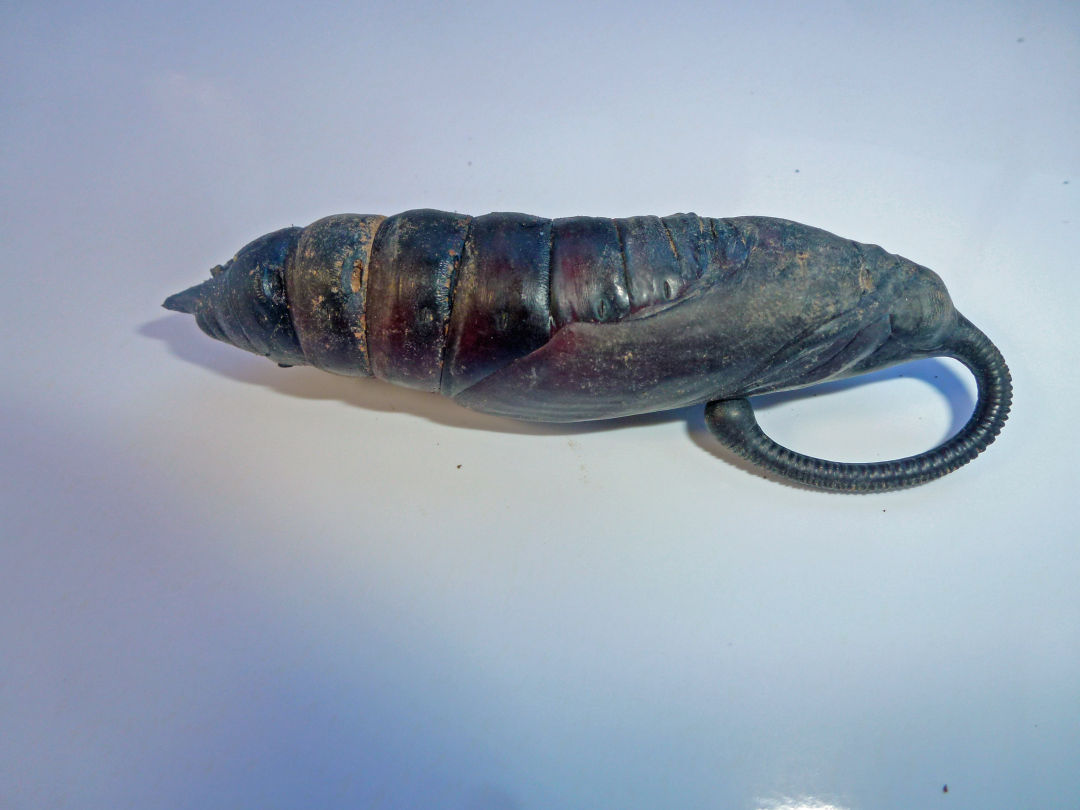Q: We’ve had this guy around for the last few days. What is he? A luna moth perhaps? What should we look for in coming days?
A: It’s a hornworm, Manduca rustica (aka rustic sphinx moth), to be precise. They are commonly seen crawling around this time of year looking for a place to pupate in the soil. They are basically harmless and not considered a pest species.
The adult moth might not emerge until spring, and they fly at night, so the adults aren’t seen as often as the caterpillars. The luna moth (Actias luna) is one of my favorites, and is found east of the Great Plains, so I am guessing you lived elsewhere once upon a time.
Q: I found the cocoon featured in the attached photo; not sure what it is. Can you ID it for me and describe its adult form? It’s fun living out in the Amado countryside; strange things come around almost daily.
A: Your pupa is that of a hornworm, a sphinx-moth-to-be. They have a very distinct shape, as you can see, and you can probably make out the shape of their wings imprinted on the side.
There are many species of hornworms, or sphinx moths. Some of the most common and recognizable are the tomato and tobacco hornworms that eat our tomato plants in the garden.
I suspect yours is one of those two, and you can keep it comfortable until it emerges to find out. We also tend to see a lot of white-lined sphinx moths, because they fly during the day and act a bit like hummingbirds when they visit flowers to consume nectar.
They are a bit smaller, and their yellow caterpillars are sometimes seen crawling en masse to pupation sites.
Another species not found here, the death’s-head sphinx moth, was a star in the movie “Silence of the Lambs,” and played a critical role in both the pupal stage and as an adult moth in helping solve the crime.
Peter L. Warren is the urban horticulture agent for the Pima County Cooperative Extension and the University of Arizona. Email questions to tucsongardensage@gmail.com





